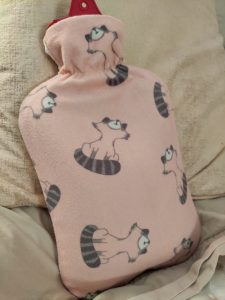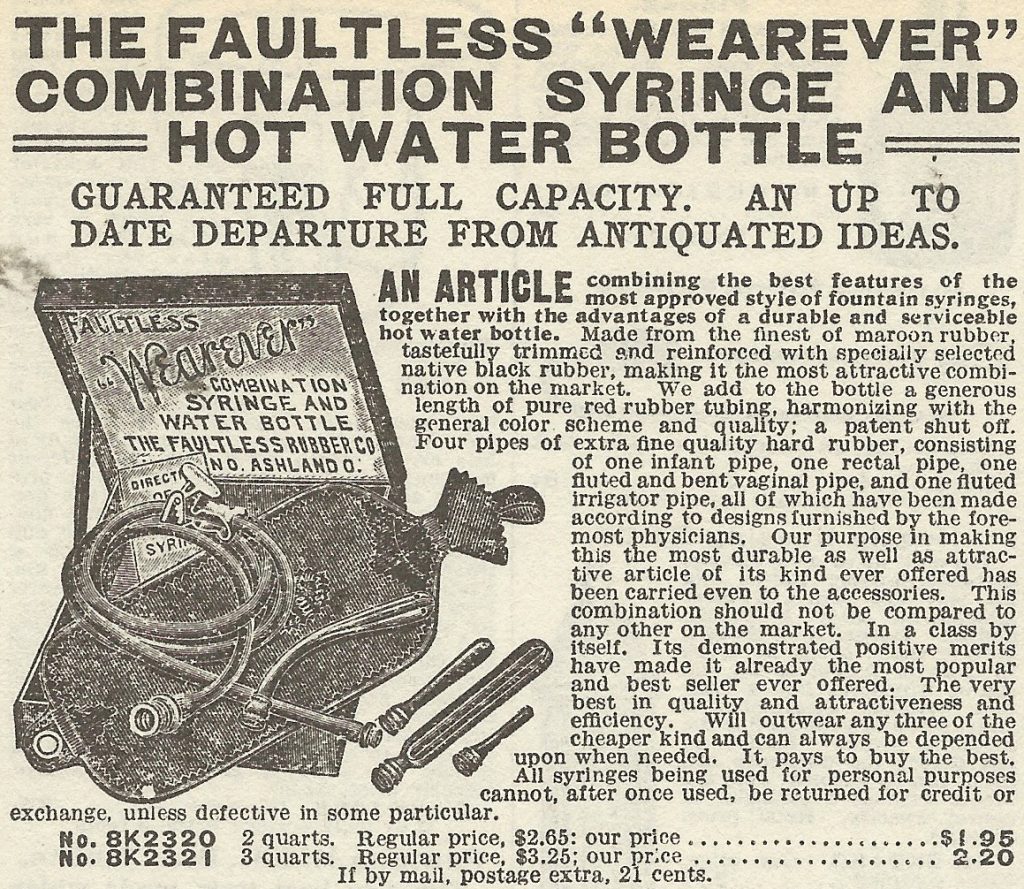I’m not in the habit of looking at my own back. So it was a shock to get a glimpse in the bathroom mirror and see a flush of rash-like striations colouring my lower spine.
I hurried to ask Nik if he’d noticed the marks, and he said yes, they’d been there a while. He didn’t like to mention it because he thought I might be feeling self-conscious – which is an absolutely true summation of my personality. Now that I knew about the tiger stripes, I couldn’t get them out of my mind.
I’m one of those people who saves up a list of things to take to the doctor instead of actually going when she needs to (I think this is probably most of us, to be fair), so I waited until my next appointment to strip off and ask my doctor what the fuck this new horror was.
“Oh, that’s a burn,” he said calmly.
“A burn??” I said. “But I haven’t been burned.”
He advised I apply Soov cream and keep an eye on it, but said it wasn’t a concern – it’d go away on its own.
That was several weeks ago, and it hasn’t gone away – because I realised how I was burning myself. And I continue doing it, multiple times a day.
I realised how I was burning myself. And I continue to do it.
I have many things in my pain toolkit, but none so affordable and accessible as my best friend: the rubber hot water bottle.
Or should I say, one of my many best friends, because my hotties and I (plural) are in a polyamorous relationship. I have one for the bed, one for the lounge, one for work, and a stack of spares lined up for whenever I’m feeling particularly adventurous.
Rubber hot water bottles were patented in 1903, but had been in use for at least 30 years before that. And before them all manner of “bottles” – fashioned from glass, metals like zinc and copper, earthware and wood – were used mainly as a means to heat beds. None of these was particularly conducive for treating pain.
The rise of electricity and glorious inventions like the electric blanket stunted the popularity of the rubber hottie, but in many places globally it’s still seen as an economical option for personal warmth.
I started using heat for pain relief at least a year before my arthritis diagnosis, and hot water bottles soon became the most effective way to deliver the treatment directly to the source.
While I have tried more recent inventions such as heating pads applied directly to the skin, battery-powered gel packs, and of course wheat bags, which are good for draping round one’s neck – I have found that rubber gets hotter and stays hotter for longer. That’s exactly what I need. However, as we’re about to discover, constant use has an impact.
While hotties don’t cause side effects like medication, cost the earth or encourage you to mindfulness your way through the pain, they do carry their own risk factors.
One of these is the wearing of the rubber resulting in bursting, which has happened to me a number of times – and I can assure you, a hot water bottle rupturing in the bed is the last thing you want. If you’re lucky enough to escape serious burns, which thankfully I have been, you’re still left with sopping sheets and faced with the task of fixing several layers of bedding. I manage to avoid this most of the time by replacing my bottles every two months or so, because I’d rather get in early than get burned.
While very economical, hotties can be surprisingly expensive, so I usually wait for a Briscoes sale and grab a few at once. A lovely friend knitted some covers for me, which is vital if you want to protect your skin and help the heat last. Store-bought covers have no patch on actual knitted wool for this.
Of course, they still need refilling every few hours, and for some people with chronic pain and disabilities, this job is taxing if not impossible. It requires dexterity, strength and finesse to hold a hottie up while pouring the water in. I try to outsource this task wherever possible.

Not my good knitted cover but this one gets a pass for trashpandas
Finally, we come to my tiger stripes. I like to call them that even though it looks more like an algae bloom. This is because over time, the heat has caused superficial damage to the blood vessels, resulting in vascular dilation. And it wasn’t until I worked out what was going on, that I suddenly saw lots of other chronic pain patients mentioning it too.
It has an actual name: Erythema ab igne, also known as hot water bottle rash, fire stains, or Granny’s tartan.
My doctor thinks the pattern will disappear over time – but I imagine that will only be if I cease use of the water bottle. And I can assure you, I am very much attached to my hot-blooded pal. So much so that I carry one around at work and have been known to tuck a stowaway inside my bulky jacket on colder days. Do recommend.
I’ve lost count of the number of times a bloke, upon seeing me and my trusty hottie in the office, jocularly remarks “Feel the cold, do ya?” The subtext of which appears to be ‘Of course you do little lady.’
If I’m having a good day, I will patiently explain that my rubber friend’s primary function is to ease arthritis in my back. I don’t usually do this because I inevitably get follow-up questions or comments about how unusual it is for a young woman to have arthritis, and how I “don’t look sick.” It’s unspeakably tiring to explain over and over that arthritis doesn’t discriminate in age or gender and is far more common than people think.
So most of time, I say “Nah, got my period, my uterus is killing me.” Unsurprisingly, the conversation dies as the man in question tries to backpeddle, and I can go on my merry way. Not to make light of menstruation pain – hot water bottles can be an excellent support for this too – but I do so enjoy making men uncomfortable. If I have to respond to tiresome jibes at my womanly weakness, they can be reminded that many women are in pain – bleeding, even – and still show up to work every week.
Many women are in pain – bleeding, even – and still show up to work every week.
Having exhausted so many options for relief, I’m not about to give up one that helps my pain without impacting my neurochemistry or knocks me out. So for now, my Erythema ab igne will be sticking around.
Besides, I’ve come to quite like the ‘fire stain.’ It seems fitting that the inflammation flaring in my nerves on the inside should make itself known on the outside.
Maybe I will show it to the next person who tells me I don’t look sick.

